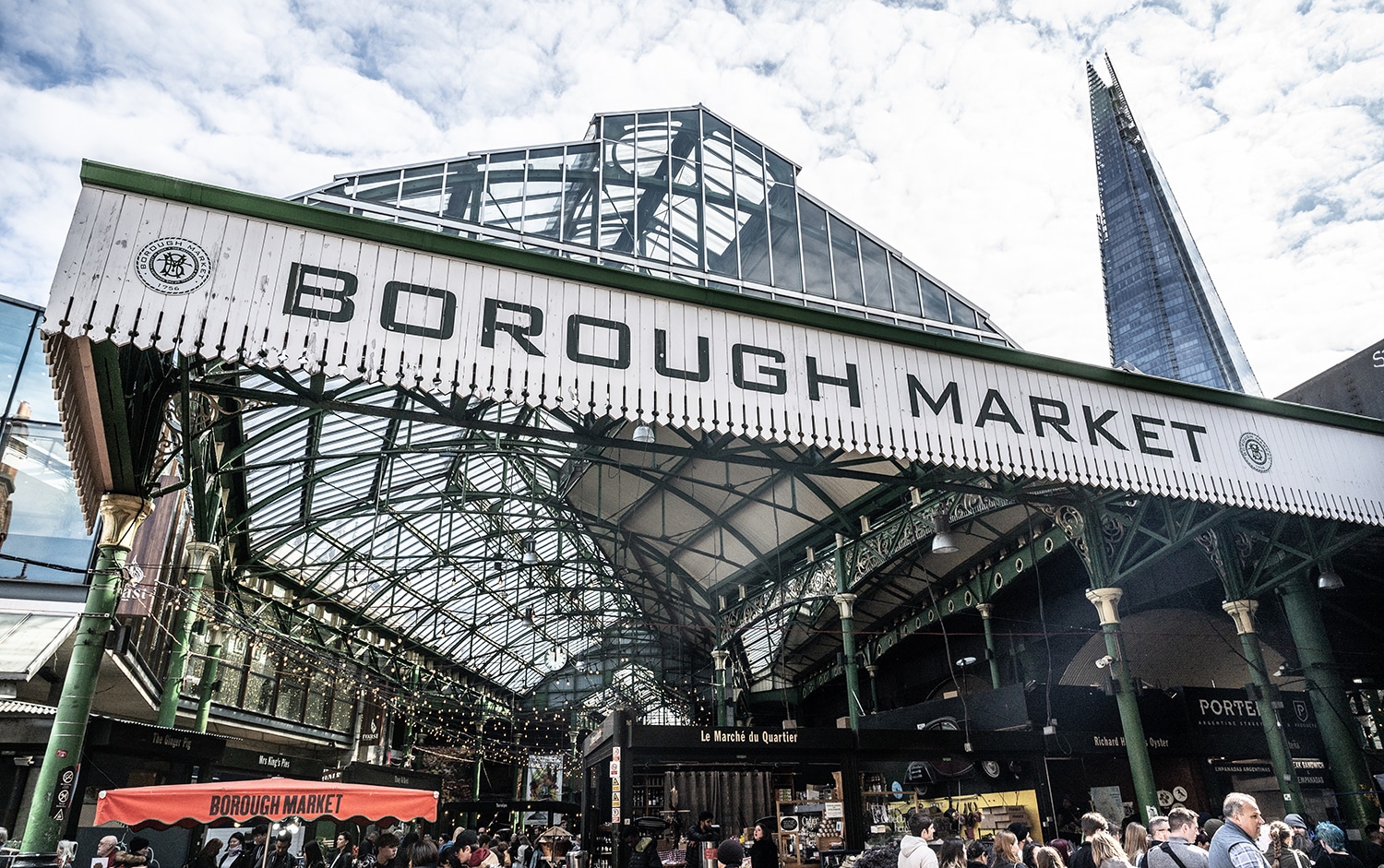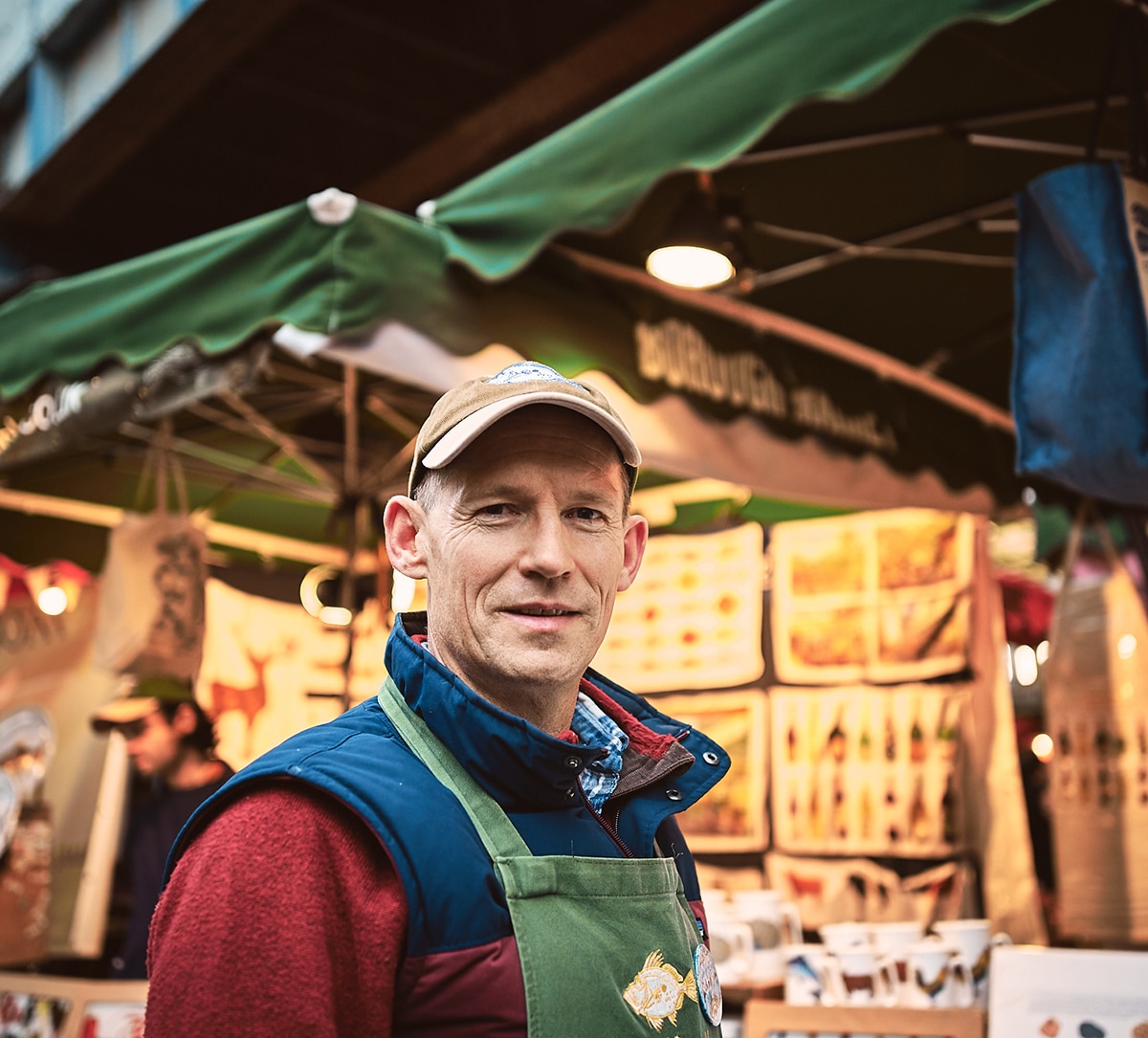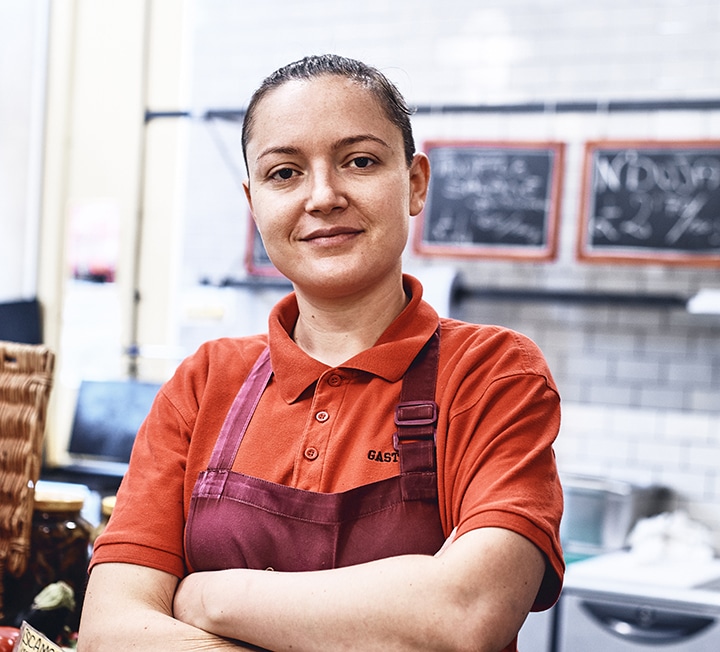From top to toe
Giulia Crouch on how the breadth of Italian regional food cultures is brought to life at Borough Market
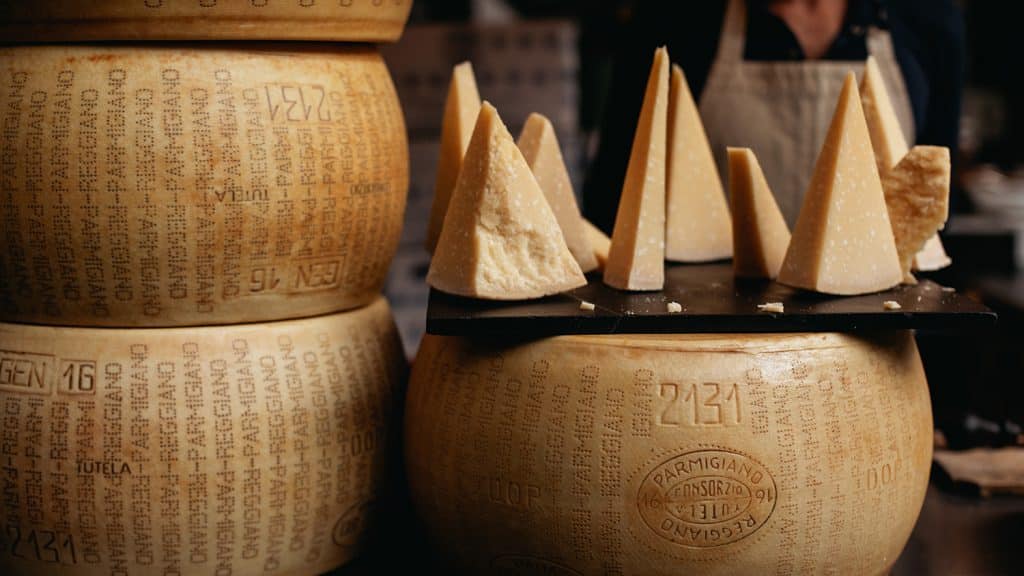

“HERE, YOU CAN EXPLORE THE BREADTH OF ITALIAN REGIONAL CUISINE WITHOUT HAVING TO BUY A PLANE TICKET”
Words: Giulia Crouch
Italian cuisine is famously regional – fiercely so. Ask a chef in the south to create a dish of the north and it’s likely they’ll turn up their nose and launch into a speech about the real taste of Italy (the food of their region, obviously). If you’re eating in Italy, selecting a dish from the local area rather than one from another part of the country is always a wise choice for your tastebuds.
I saw this firsthand last summer when one of my relatives, Maria, a southern Italian, attempted to make carbonara, a dish from Rome, a city in central Italy. I had never known her make anything that didn’t taste good, but this carbonara, which was oddly slimy and really quite bland, was one of the worst I’ve ever tasted. But then Maria didn’t grow up eating the dish or learning how to make it. It’s simply not in her blood. Instead, her jam – and that of her fellow southerners – is tomato-rich dishes such as caprese salad, spaghetti with tomato sauce and the unbeatable Margherita pizza.
Head north, to Emilia-Romagna, and you’ll find different flavours: rich, meaty ragù, tortellini in comforting broth, and many more rice dishes than you’d see down south. The same distinct regionality isn’t just true for recipes but also for single products which in some cases can be traced back to specific cities. Within Emilia-Romagna, balsamic vinegar hails from Modena and prosciutto di Parma is from – you guessed it – Parma.
A major reason for this is the diversity of the country’s geography and climate, with its long coastlines and mountain ranges, and a distinctive shape which results in the southern regions being closer to north Africa than they are to France. But history also plays its part. “You have to remember that Italy has only been a unified country for a little over 150 years,” says Mark Riddaway, author of Borough Market: Edible Histories. “Before that it was made up of lots of independent city states, each with its own history of trade, migration and conquest and its own distinctive culture. I think that helps explain why regional identity still runs so deep. And because food is so central to Italian society, it’s through food that these historic identities are often asserted.”
This comes through clearly in the zeal with which each town, city or region will promote its signature fare. Recently, on a trip to Bologna, I witnessed a mortadella producer pick up a 2.3kg sausage, hold it in his arms like a baby, and beam as he invited people to take pictures of him with his pride and joy.
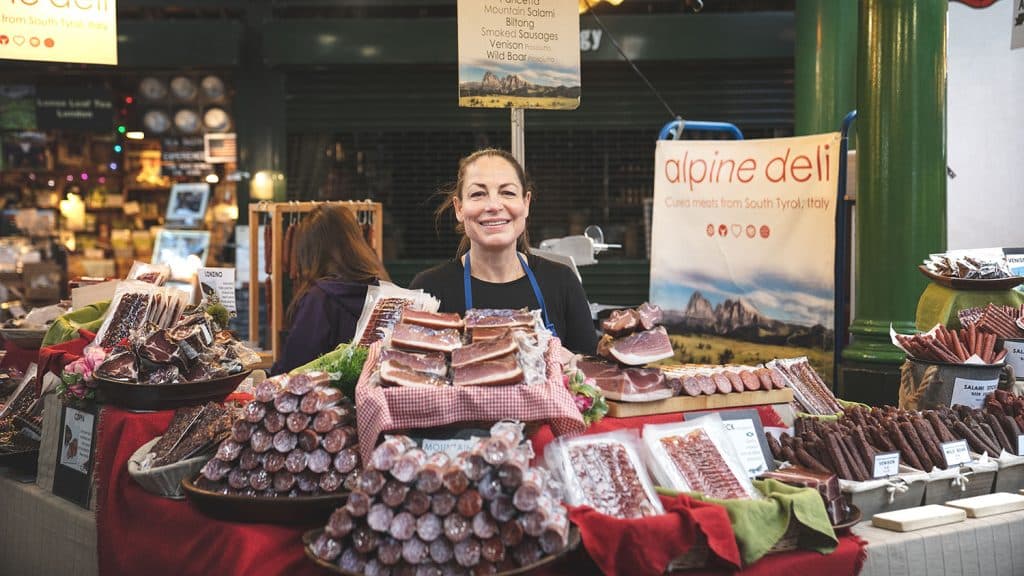
In Borough Market you can explore the breadth of Italian regional cuisine without ever having to buy a plane ticket. There are seven Italian food stalls here, all offering very different products. One of the most striking to me is Alpine Deli. Owner Thea Wunderer sells the products of her home region, South Tyrol, which, bordering Slovenia, Austria and Switzerland, is as far north in Italy as you can go. The food is influenced by its mountainous terrain and, to many people, appears more German or Austrian than Italian – though really it’s its own thing: Alpine.
Specialities include venison prosciutto, which is air-dried and lightly smoked – a key characteristic in the food of South Tyrol. Thea has a whole range of smoked charcuterie available including smoked sausages, smoked speck and Alpine bresaola made with silverside of beef. The speck is normally sliced very thinly or put inside traditional bread dumplings known as knödel or canederli.
The meaty, hearty food of South Tyrol could hardly be more different from the sun-soaked, vegetable-rich cuisine of the south. Wander two minutes from Thea’s stall to another called De Calabria, where you can enjoy the wonderful produce of Calabria, and you’ll be journeying from the top to the ‘toe’ of Italy – the southernmost part of the country.
Giuseppe Mele, who established the business in 2005, likes to celebrate the varied terrain of his home region and the wealth of different produce that comes from it. “The food of Calabria is influenced by the many microclimates of the region,” he says. “There are mountains and valleys and coastlines, so it brings with it a lot of diversity.” One year, when the olive harvest in Italy was generally poor, brilliant oil could still be produced in Calabria thanks to the highly specific conditions of one part of the region.
At the stall you can find examples of fantastic Calabrian extra virgin olive oil, honey, cheese and an array of chilli products. Calabrians certainly like their spice, as is clear from their love of nduja, a spreadable salami made from pig’s cheeks, belly and lard. Rendered a vibrant, deep red from a healthy dose of Calabrian chilli peppers, it’s one of the most popular items on the stall. “Thirty years ago, nduja was only known in a little area nearby where I’m from,” says Giuseppe. “Now, and in the last 15 years, it’s exploded and is known all over the world.”
Sun-dried tomatoes are also key to the cuisine and Giuseppe’s, which he finely chops and puts in oil with dried chilli, fennel seeds and dried oregano, are extra special. I have a jar in my fridge and I use them on everything.

Around the corner from De Calabria, you’ll also find the proud produce of Emilia-Romagna on offer in Borough Market. Ewa Weremij, who owns Bianca Mora, is passionate about both the food of the region and the regionality of Italian cuisine in general. “It’s so important because southern Italy is so different from northern Italy and central Italy is different again. The south is sunny and dry, so prosciutto di Parma or parmesan cheese could never be made there because there’s not enough humidity. Instead, you get olives, olive oil and citrus fruits.”
Ewa says that even within one region the food can have its own local distinctions. “Emilia-Romagna used to be two regions, Emilia and Romagna, and while it’s one today the cuisine is still different between the two parts.” In other words, Italian cuisine is not just regional, it’s hyper-regional. In fact, it will even differ from house to house. One auntie will make the local pasta dish like this, the other will make it like that, but both will claim theirs is “the correct way”.
Ewa, like all of the Market’s Italian food importers, is keen to champion not just the produce but the producers, and often sources from family businesses that make their wares using traditional methods and native breeds. One of her stand’s most popular products, ‘red cow’ parmesan is produced from the milk of Vacche Rosse cows, an ancient breed unique to the region. This, she says, creates a cheese unlike those made with milk from Friesians. Not just that but this parmesan can differ depending on the season: summer milk tastes different from winter milk, and the environment in which the cows are kept can also affect the flavour and intensity – those in the mountains eat more herbs and produce a stronger-tasting cheese. “Parmesan is not just parmesan,” she explains.
Bianca Mora also sells other classics, including a very special 100-year-old balsamic vinegar from Modena and prosciutto di Parma, one of Emilia-Romagna’s most famous exports. “When I first visited Borough Market in 2009, I knew this was a place that I could bring people a true taste of Emilia-Romagna,” says Ewa. In fact, your tastebuds can tour Italy’s many regions – all in this small patch of central London.
